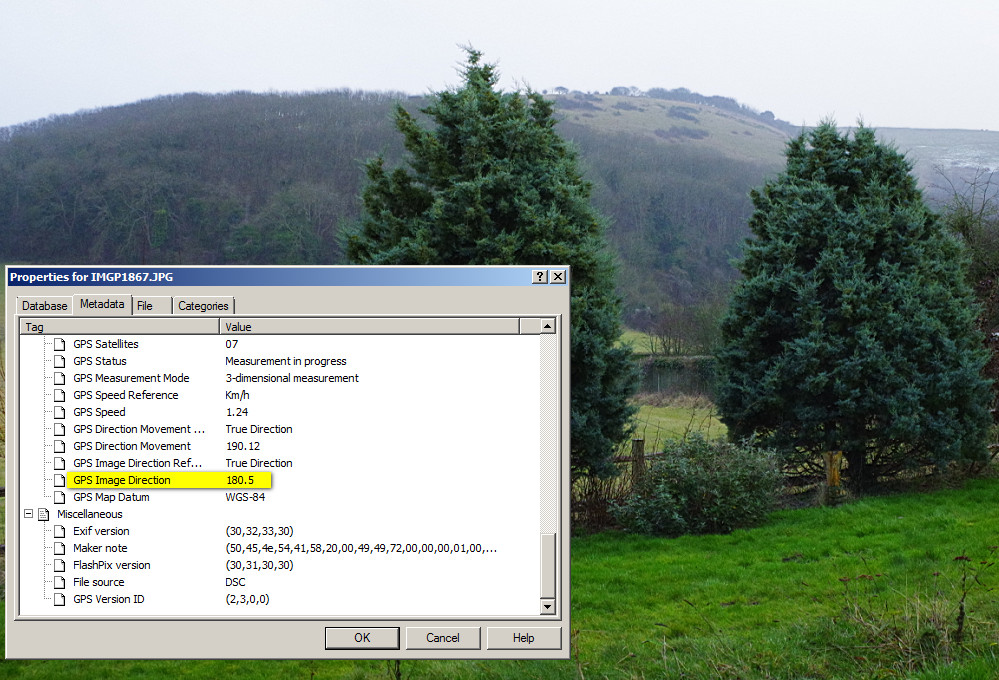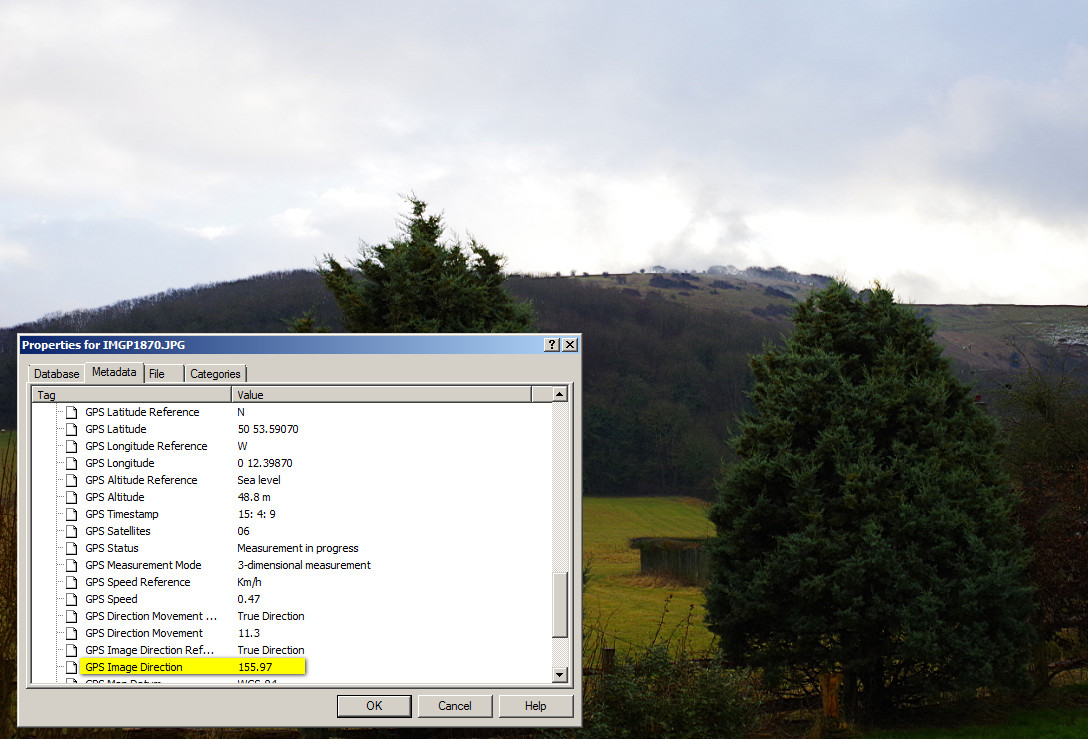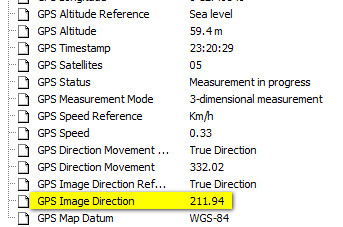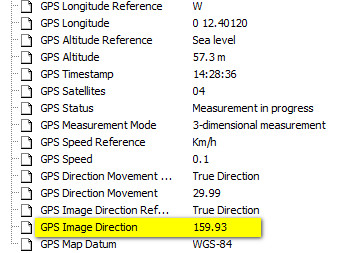Thanks

Without any new adjustments, the camera heading displayed in the info screen is within a couple of degrees of a magnetic compass located about 2ft under the camera.
This is another pic, correctly showing a 180 degree heading, taken from a very similar place in the house

However, the mystery deepens.
Measuring the correct magnetic heading (I am a pilot so know true v. mag) for that night shot, where the EXIF shows 181 degrees, with a compass, shows 180 as close as I can read it. I did that about 5m away from the house.
But measuring the magnetic heading with the compass where the tripod was in that shot, 1m away from the house, produces a different heading, and this photo shows it

So the issue here seems to be a combination of things:
1) Close to the house, both compasses (the real one and the camera's) are about 20 degrees out (under-reading) but they agree.
2) The camera was probably not properly calibrated last night.
Not sure this squares up with Stone G's analysis which suggests the heading error was in the opposite direction.
But I need to try another star shot well away from the house.
I also found this
http://www.ricoh-imaging.co.jp/english/products/o-gps1/calibration.html
Finally, referring back to the earlier images of the star sky, I can see how the sensor shift cannot compensate fully
if the sensor can rotate only about its centre. If the sensor can rotate about a centre point which is outside its area (which should be possible if the suspension system was implemented thus) then one should get all the stars sharp even if the camera is not pointing at the centre point around which the stars rotate.


 Similar Threads
Similar Threads 


























